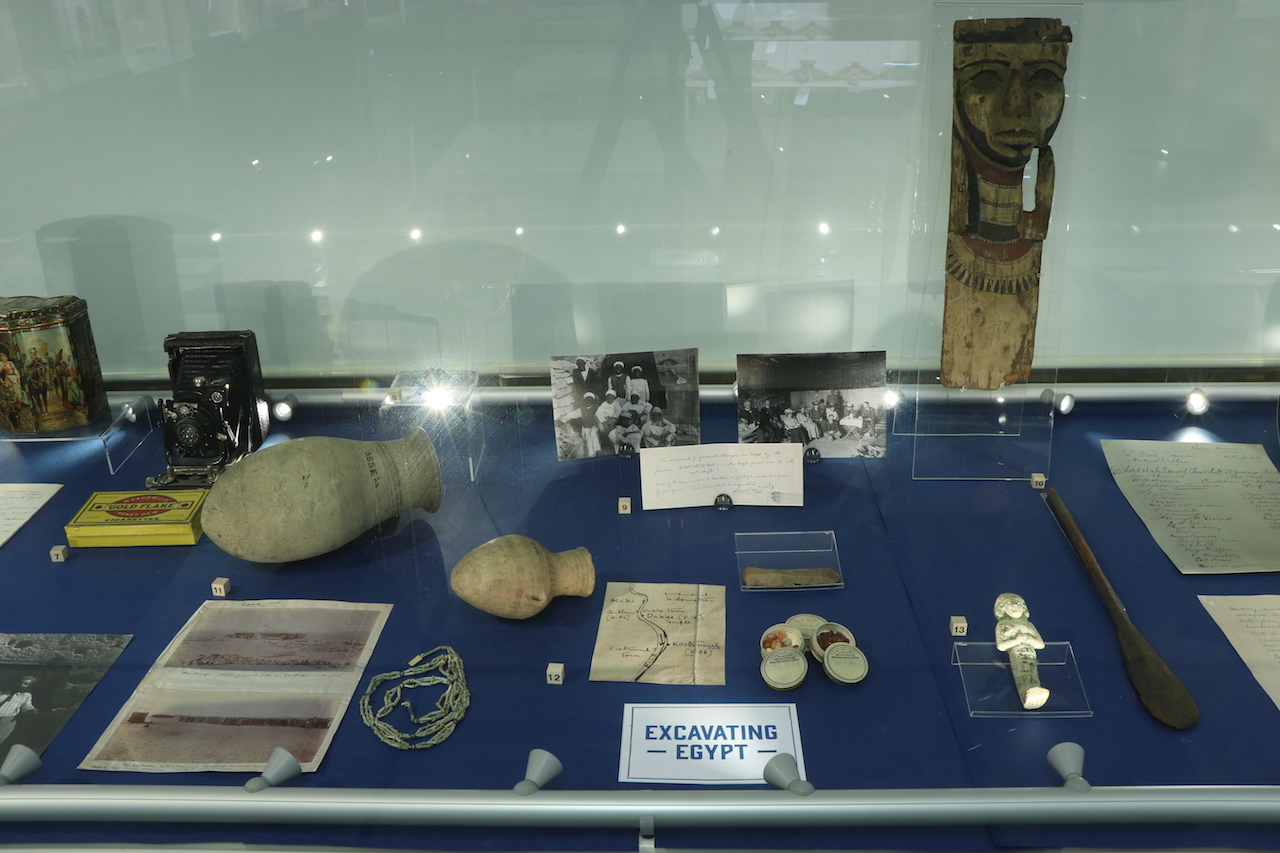John Garstang first went to Egypt for the winter season of 1899-1900. Although he had already participated on excavations in Britain, he was still in training. In Egypt, he gained further field experience at the ancient city of Abydos as a member of the excavation directed there by Flinders Petrie and his wife Hilda (Urlin) Petrie.
In 1902 Garstang was appointed Honorary Lecturer in Egyptology at the new University of Liverpool. Two years later he helped to establish the first-ever Institute of Archaeology. With funding from small “Excavation Committees” (made up of wealthy industrialists, collectors, and curators) Garstang directed a series of excavations at various sites in Egypt. While on site, he sent regular handwritten reports to his “Committees”. These reports included illustrations – mounted captioned photographs.
Along with his assistant, a 26-year old artist called Harold Jones, Garstang relied Egyptians for this work. His chief foreman (ra’is) was a man called Saleh Abd El Nebi. Saleh Abd El Nebi was from a place that Garstang called ‘Awidat’, and he worked with Garstang throughout Garstang’s seasons in Egypt and Sudan.
Abd El Nebi was first introduced to audiences in Britain through newspaper coverage of excavations at Beni Hassan; the second excavation Garstang directed. A portrait of Abd El Nebi was published in the Illustrated London News in 1904. He was later credited for his role in the excavations in Garstang’s book Burial Customs of Ancient Egypt.
Several sites they excavated were under threat due to colonial engineering projects: barrages and dams. The most important was at Aswan. Built by a British company, the Aswan Dam ensured more land could be farmed. As a result archaeological sites in Lower Nubia (the southernmost part of modern Egypt) and the modern villages near them were flooded, and the people living in the area had to leave their homes.
On display
- String of beads from el-Mahasna [Ure Museum], where Garstang continued his field-training working with the Petries for the 1900-01 season. The site was near to Abydos.

- Photograph of unnamed Western visitors inside the site ‘office’ at Beni Hasan, which was inside a tomb. Egyptians, including the mayor and police assistant of Abu Qurqas (the town nearest the excavation), also visited the site. Photograph of a group of unnamed Egyptians at Beni Hassan – the man on the far left (top row) has provisionally been identified as Saleh Abd El Nebi. Detail from an excavation report showing Saleh Abd El Nebi’s signature and seal in Arabic [Reproduced courtesy of the Garstang Museum]. The signature includes his role in the excavation: ra’is (foreman).
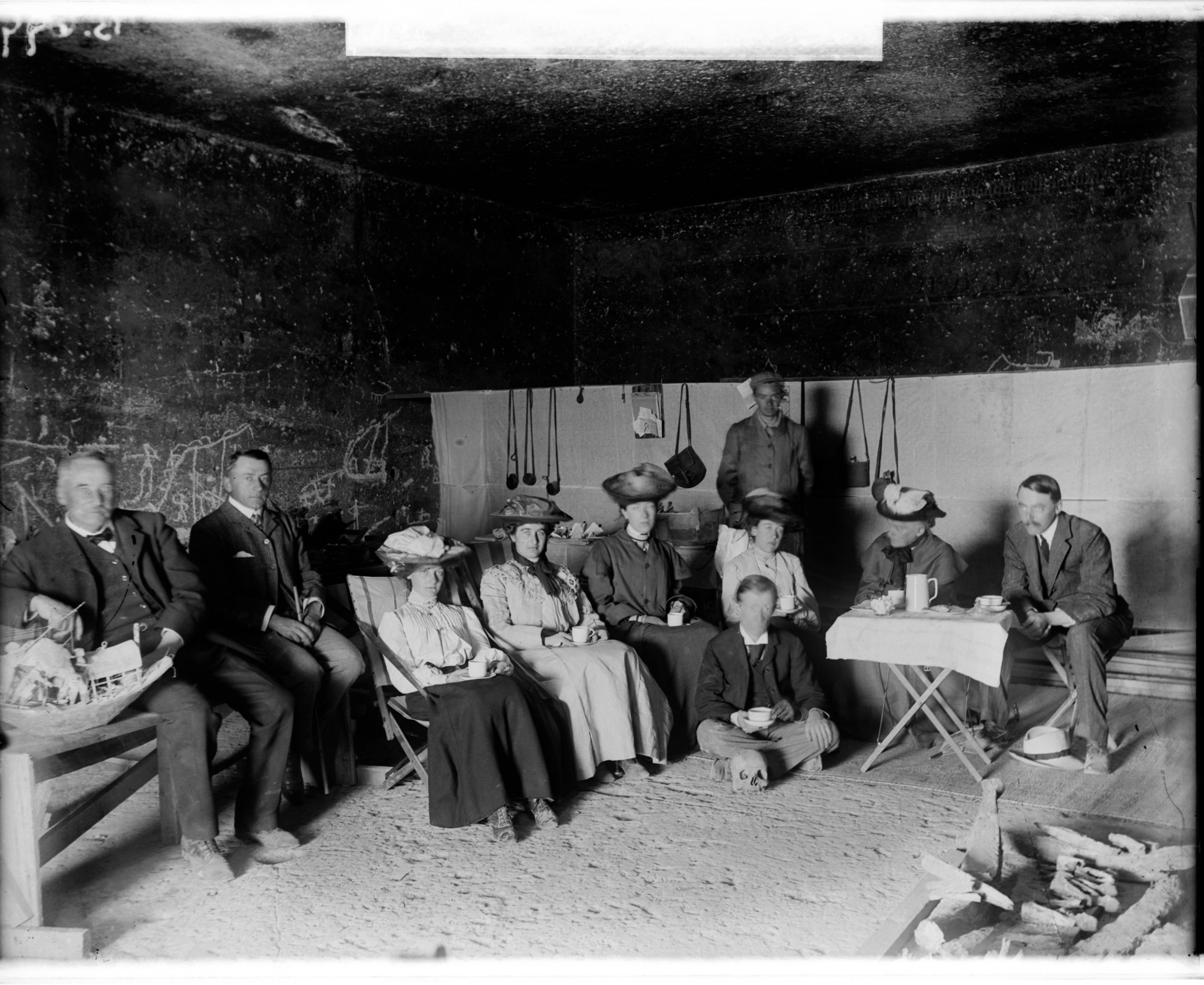
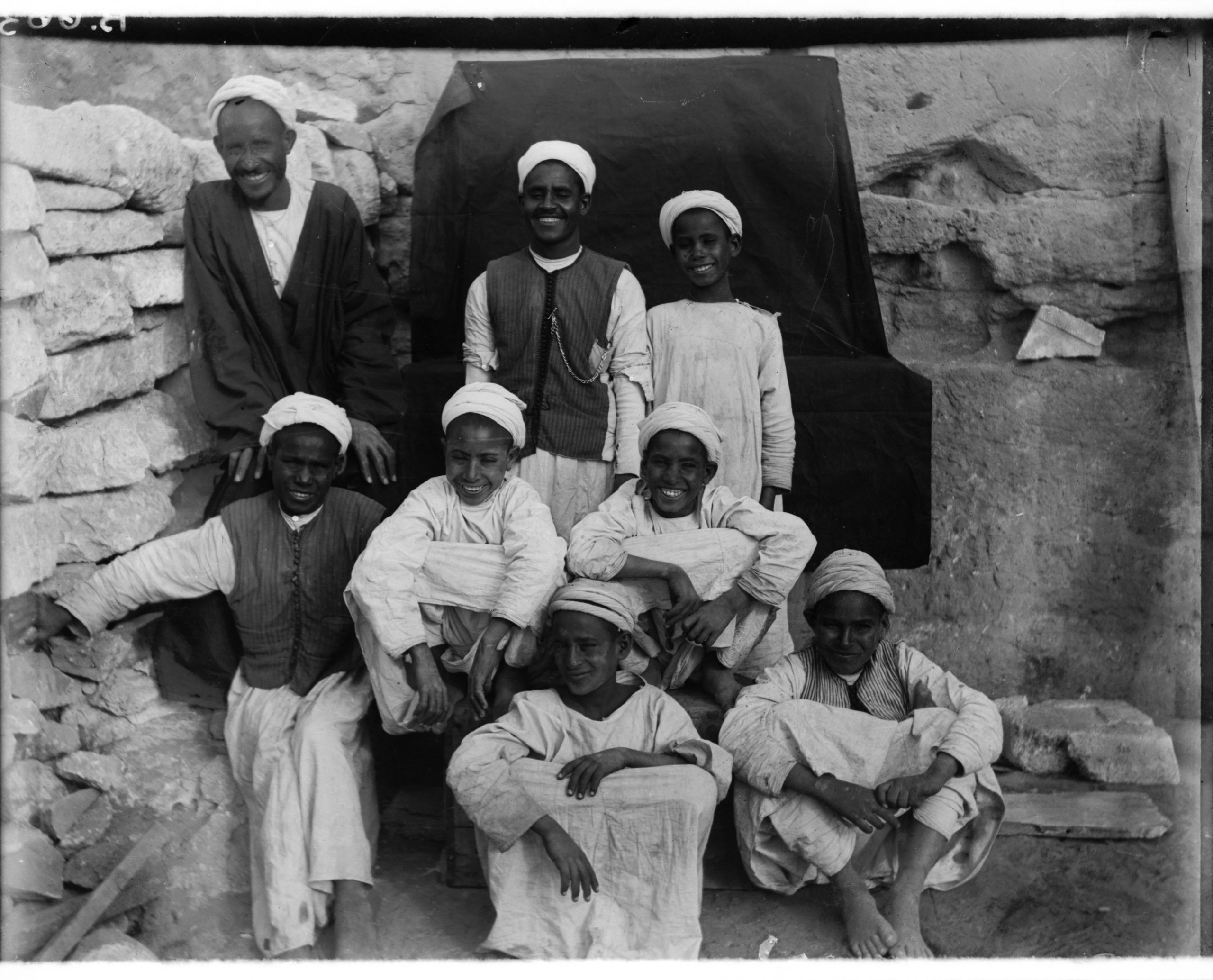
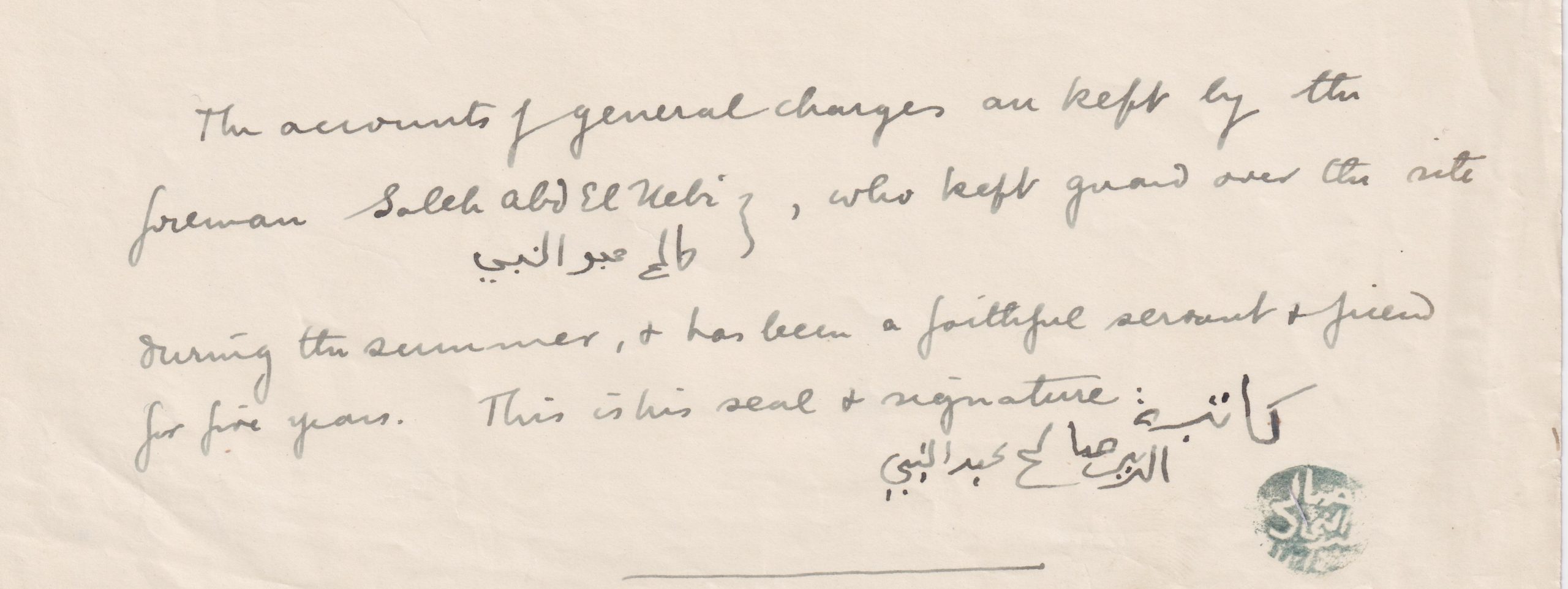
-
- Read a blog post about the life and work of Saleh Abd El Nebi.
- Oar of model boat (12th Dynasty) from a Beni Hassan tomb discovered during Garstang’s two seasons on site (1902/3-1903/4). The boat is currently in the Egypt case. Coffin mask (12th Dynasty) from Beni Hassan [Ure Museum]. Nearly 900 tombs were excavated during Garstang’s two seasons. When Princess Henry of Battenburg (the youngest daughter of Queen Victoria) arrived on site in January 1904, Saleh Abd El Nebi was asked to lower her into Tomb 723, final resting place of Sebekhetepi, an official.
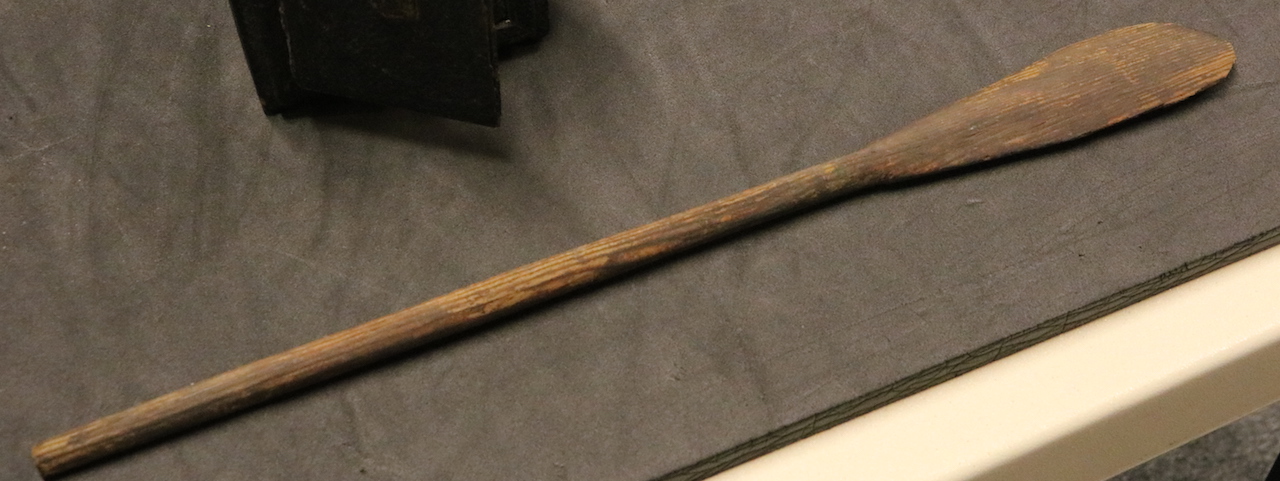

- String of faience beads, and a terracotta jar (3rd Intermediate period) found at Esneh (Esna) [Ure Museum]. Excavations in the Esneh necropolis lasted two seasons (1904/5-1905/6). Page from one of Garstang’s interim reports on Esna with photographs of the dig house (top) and a large group of workmen (bottom) – a makeshift minaret can be seen at the far left [Reproduced courtesy of the Garstang Museum]. Esneh was a modern town, with a large population. It was the last big supply stop for tour boats going further upriver. At the time Garstang was there, a barrage was being built by John Aird & Co, the same company who had built the Aswan Dam.

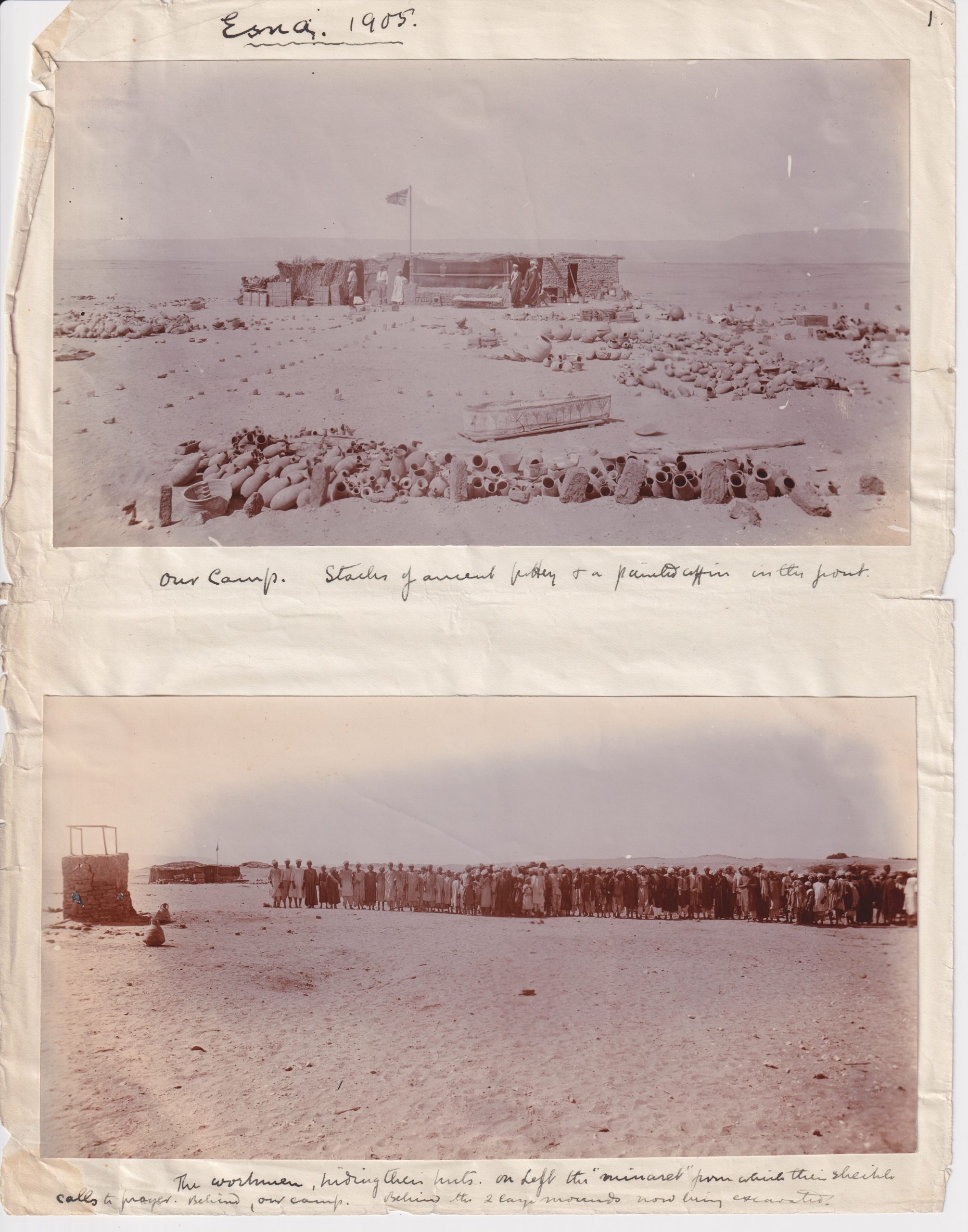
- Amphora (3rd Intermediate Period) from Qubban and a flint knife, beads and fragments of turquoise (Predynastic) from Koshtamna (Kostamneh) in Nubia [Ure Museum]. The beads and turquoise are still in their original storage containers. Detail from a hand-drawn map showing the location of Qubban and Koshtamna along Nile [Reproduced courtesy of the Garstang Museum]. Garstang and his team excavated in 1906 at Qubban and at Koshtamna fortress, close to a village of the same name, where they discovered prehistoric graves. Both sites were at risk of flood damage at the time; following the second phase of dam building in the 1960s they are now submerged in Lake Nasser.
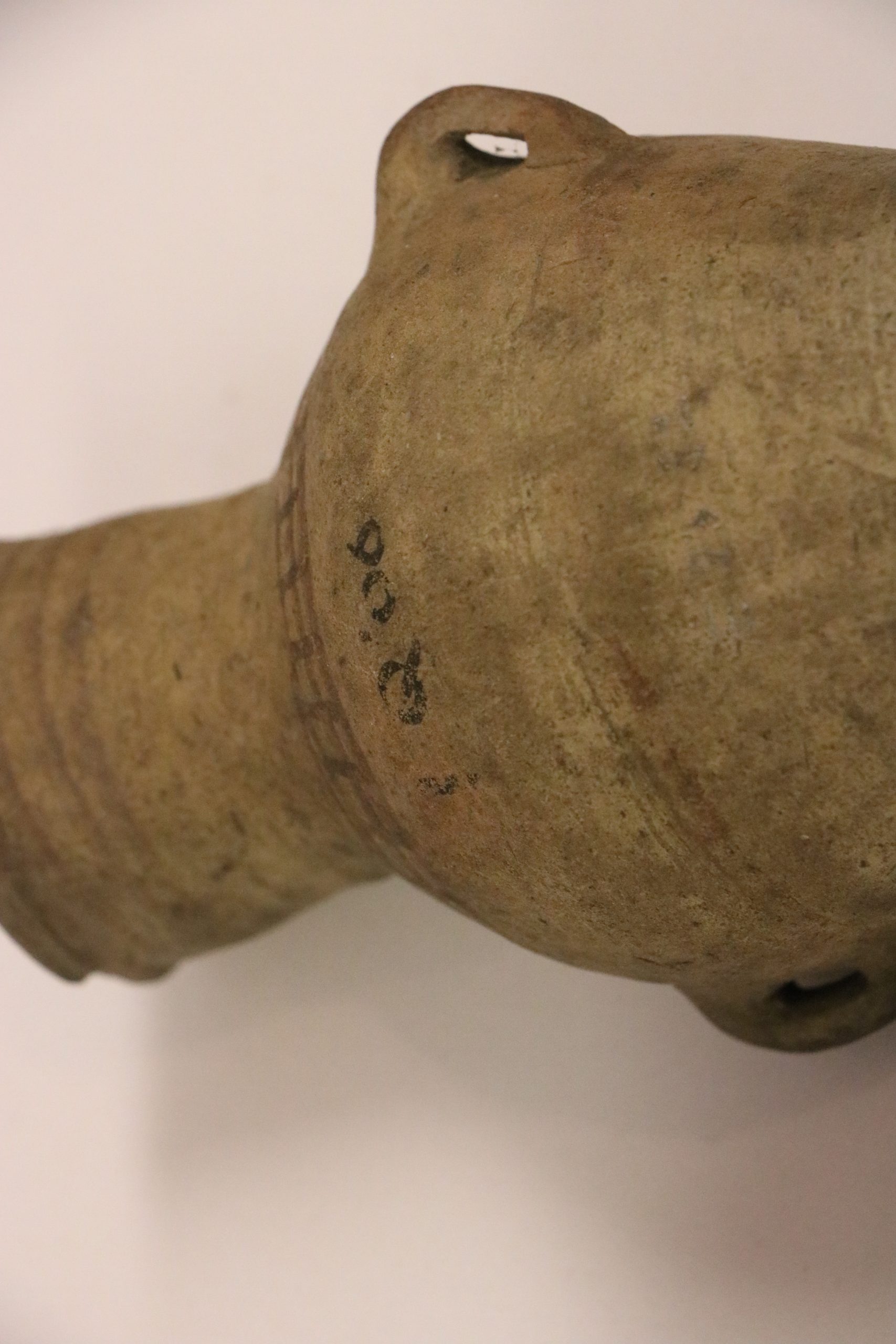
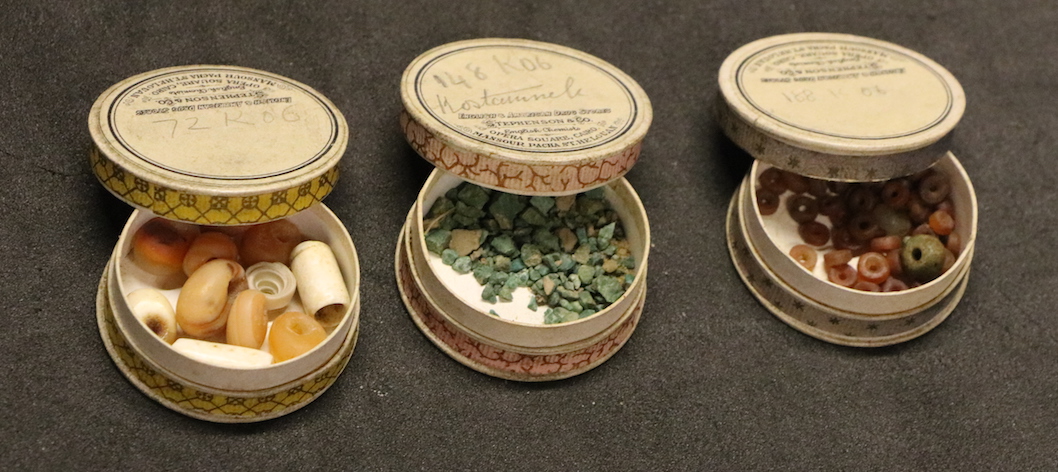
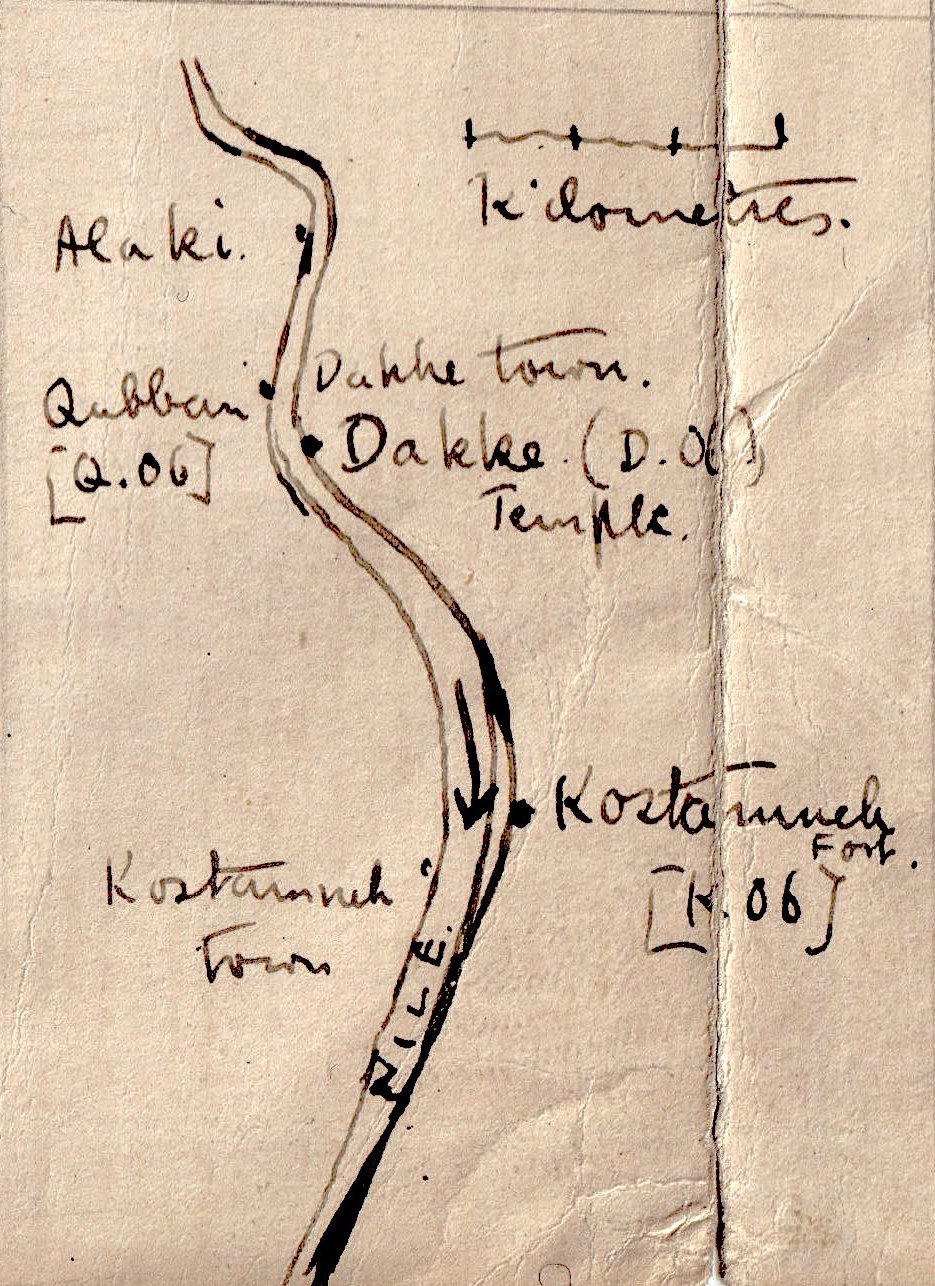
- Shabti from Abydos (3rd Intermediate Period) with its original Liverpool label [Ure Museum]. Garstang was based at Abydos for three seasons (1906/7-1908/9). He married Marie Berges in 1907. She worked alongside him for the rest of her life, becoming particularly skilled in reconstructing pottery.
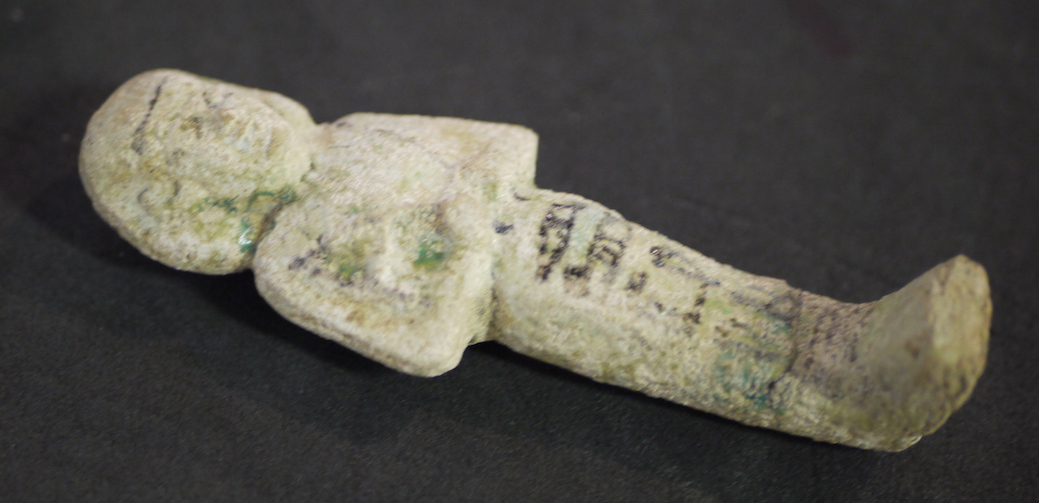
Text and labels by Amara Thornton (Research Officer, Ure Museum)
Go to Excavating Egypt Drawer.
Go back to Britain in Egypt, move forward to Egypt in Britain.


